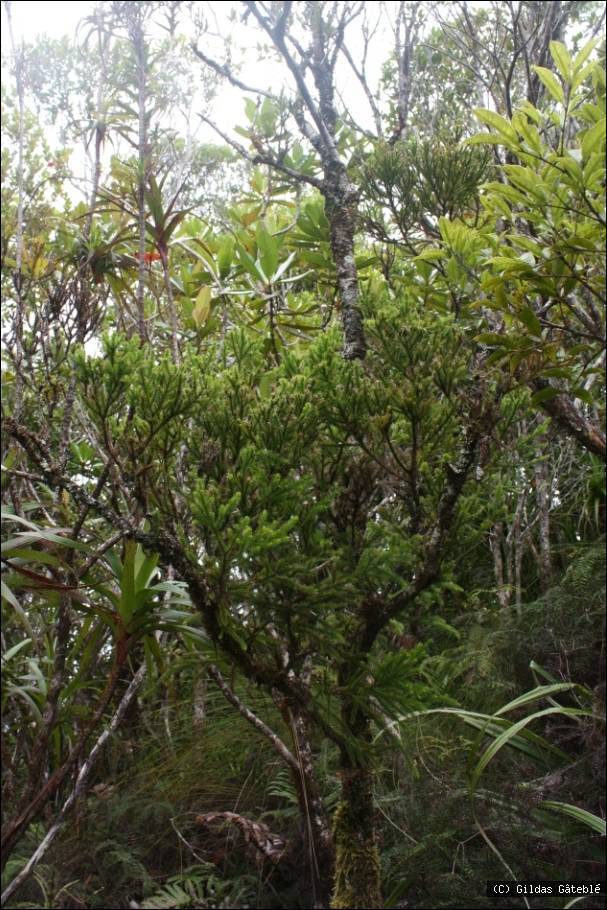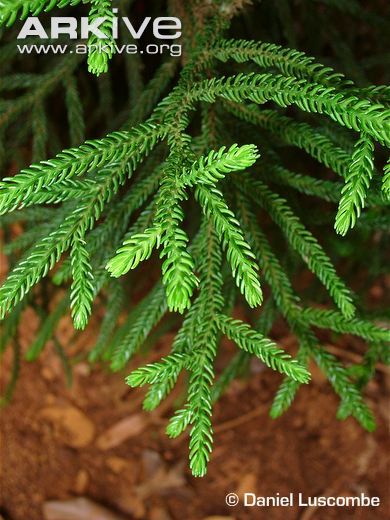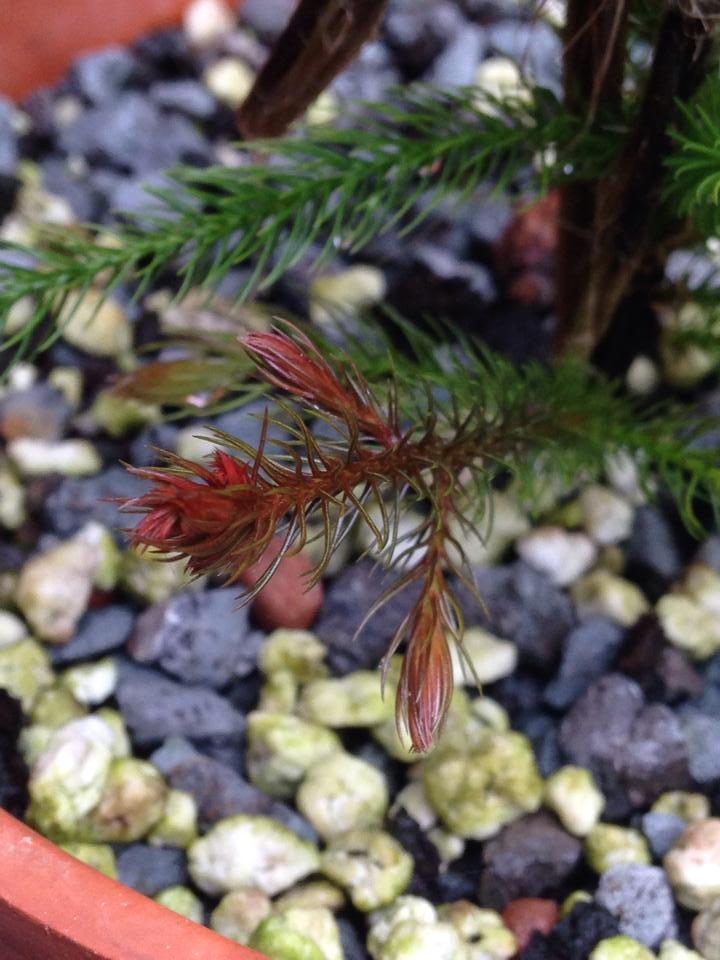Dacrydium lycopodioides, first described by Brongniart et Grisebach in 1869 is commonly known as Mou. It is an evergreen, heavily branched coniferous tree in the Podocarpaceae family which will reach heights of 75 feet (25 m) or occasionally more. Its bark grows in brown layers, and is fibrous and light colored inside, the surface being more or less smooth and covered in many small lenticels. Juvenile leaves are spiny, very thin, 0.4 inch (10 mm) long, gradually becoming adult leaves. Adult leaves are flat, lanceolate, slightly keeled on the dorsal side with a clear ridge on the axial side, thorny, spreading out and curved so that the apices are parallel with the branch, 0.15 inches (3 - 4.5 mm) long by 0.03 inch (0.7 - 0.8 mm) wide. Pollen cone occur on the terminals and often also lateral at the base of a terminal pollen cone, are cylindrical, 0.22 inches (4 -7 mm) long and 0.05 inch (1.2 mm) in diameter. Seed cones are also terminal, often on a short shoot, leaves just below the seed cone very small compared to normal leaves. Cone bracts very large and partially covering the epimatium, normally only 1 fertile bract. Seed partially erect and completely visible, a shiny chocolate brown, oval and tapering off to a blunt point, 0.12 inch (3-3.5 mm) long.
Distribution. The species is native only to the island of New Caledonia - at elevations of 2,700 to 4500 feet (900 - 1,400 m) elevation in "ombrophilous forests on the southern part of the main island." Within its range, mean annual temperature is 66º F (19.0° C), with an average minimum in the coldest month of 54º F (12.4°C), and a mean annual precipitation of 75 inches (1899 mm).


